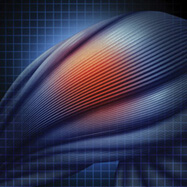Imperturbability, preparation for internal medicine's future
Student well-being and resiliency should be part and parcel of medical training, and this lifelong learning will help them overcome some of the burnout issues facing medicine today.
Editor's Note: Dr. Mir is Chair, ACP Board of Regents, 2015-2016, and is guest-writing this month's President's Message.
In acknowledging the ACP Centennial and the many challenges that my fellow internists face today, I am reminded of this quote from Calvin Coolidge: “Nothing in this world can take the place of persistence. Talent will not; nothing is more common than unsuccessful men with talent. Genius will not; unrewarded genius is almost a proverb. Education will not; the world is full of educated derelicts. Persistence and determination alone are omnipotent.” It is this persistence and determination that will help us navigate the care of adults across the spectrum of health to chronic illness with compassion and clinical expertise.
The health care environment has transformed, and the expectation is to provide patient-centered, community-based care while at the same time improving outcomes. Medical innovation, team-based care, and focus on transitions of care will assist us in achieving some of these goals. After 12 years and 17 patches to the sustainable growth rate, the Medicare Access and CHIP Reauthorization Act (MACRA) passed Congress and was signed into law by President Obama on April 16. This will create stable and positive changes for physicians in the near future. Although some of these changes are modest, they are a step in the right direction for internists and other specialists. A 0.5% raise is better than a 21% threat to Medicare reimbursement looming year after year.
Based on recent projections from the Association of American Medical Colleges (AAMC), by 2025, the demand for physicians will exceed supply by a range of 46,000 to 90,000. This figure includes primary care, medical and surgical specialties, and all other specialties.
Each year, more than 16,000 students graduate from AAMC-member medical schools, and more than 100,000 resident physicians continue their training at teaching hospitals and associated community sites across the country. Physician training can take up to a decade; hence, the physician shortage issue is being addressed now.
In addition to the quantitative challenge in medical education, curricular mandates and innovative variations are bringing the undergraduate and graduate medical education worlds closer to the medical practice universe. Today's focus in medical education is shifting toward a patient-centered, team-based model, with ever-increasing focus on improving health care outcomes across all care settings.
As we prepare our workforce of tomorrow, student well-being and resiliency should be part and parcel of their training, and some successful models are already in place. This lifelong learning will help them overcome some of the burnout issues we face today.
Along the same principles, the Maintenance of Certification (MOC) process is undergoing changes that are pledged to make the program more consistent with physicians' practice and values. ACP hopes and believes in seeing a future MOC process that would maintain professional standards in medicine.
An important and historical reminder for our members is that the American Medical Women's Association shares its centennial with ACP. The recent AAMC study “The State of Women in Medicine: Pipeline and Pathways to Leadership, 2013-2014” showed that women make up roughly one-third of the full-time academic medicine workforce and remain underrepresented in key faculty and leadership positions, including full professors, department chairs, and deans. We still need to work on diversity and health care disparities in our world of medicine. As I look back at my career and my association with ACP, I am proud to be a female internal medicine specialist, serving in the capacity of the Chair of the Board of Regents.
The great William Osler left us inspirational quotes and essays. In his first essay, “Aequanimitas,” he wrote, “Imperturbability means coolness and presence of mind under all circumstances, calmness amid storm, clearness of judgment in moments of grave peril, immobility, impassiveness, or, to use an old and expressive word, phlegm. It is the quality which is most appreciated by the laity though often misunderstood by them; ... Cultivate, then, gentlemen, such a judicious measure of obtuseness as will enable you to meet the exigencies of practice with firmness and courage, without, at the same time, hardening ‘the human heart by which we live.’ ...
“You cannot hope, of course, to escape from the cares and anxieties incident to professional life. Stand up bravely, even against the worst. ... Well for you, if you wrestle on, for in persistency lies victory, and with the morning may come the wished-for blessing. But not always; there is a struggle with defeat which some of you will have to bear, and it will be well for you in that day to have cultivated a cheerful equanimity. Remember, too, that sometimes ‘from our desolation only does the better life begin.’ Even with disaster ahead and ruin imminent, it is better to face them with a smile and with the head erect, than to crouch at their approach. And, if the fight is for principle and justice, even when failure seems certain, where many have failed before, cling to your ideal.”
In sharing some of my reflections about persistence and determination of physicians, and using the imperturbability or emotional coolness described by Osler, I feel we will all be better prepared for changes and challenges of our profession. I conclude with words borrowed from Osler again: “... and nothing can quench the pride I shall always feel at having been associated, even for a time, with a Faculty so notable in the past, so distinguished in the present, as that from which I now part.”



